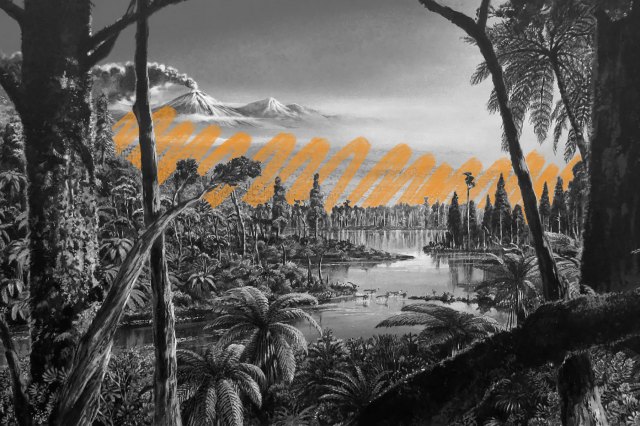Antarctica used to be very different
Friday, May 17, 2024
It's difficult to comprehend within our limited, double-digit life spans, but Earth is a dynamic planet that is constantly changing. The continents have crashed together and separated a handful of times now (Pangaea is the latest supercontinent, but not the only one), and the planet's atmosphere, oceans, and orbit are all temporary and movable. |
| |
| |
|
 |
|
| I t's difficult to comprehend within our limited, double-digit life spans, but Earth is a dynamic planet that is constantly changing. The continents have crashed together and separated a handful of times now (Pangaea is the latest supercontinent, but not the only one), and the planet's atmosphere, oceans, and orbit are all temporary and movable. Take, for instance, Antarctica, arguably the most inhospitable place on the planet. Not long ago (geologically speaking), the icy continent wasn't frozen at all. In fact, it was filled with temperate rainforests teeming with life. |
|
|
| Some 90 million years ago, during the Cretaceous Period — the tail end of the age of dinosaurs — Antarctica was home to a completely different habitat, known as the "Cretaceous hothouse." The Earth was much warmer due to increased carbon dioxide levels (sea-surface temperatures in the tropics were at an incredible 95 degrees Fahrenheit, for example), and the world's oceans were a staggering 558 feet higher than they are today. Estimates suggest that Cretaceous Antarctica had a climate similar to today's Italian peninsula and was filled with plant and animal life, including dinosaurs. The southern continent's hospitality didn't end with the dinosaurs, either; it continued on into the Eocene Epoch around 56 million to 34 million years ago. It was then that marsupials likely migrated across Antarctica from South America into modern-day Australia before the continents separated. So while Antarctica is pretty inhospitable to humans now, it may just be a phase. |
|
 |  |
|
|
 |
|
| |
|
| Average thickness (in miles) of the Antarctic ice today | | | 1.3 |
| | | Number of people who overwinter at the world's most remote Antarctic research station | | | 39 |
| | | Number of people who overwinter at the world's most remote Antarctic research station | | | 39 |
|
|
|
| Estimated years since Australia fully separated from Antarctica | | | 30 million |
| | | Year Emilio Marcos Palma became the first person born on the continent of Antarctica | | | 1978 |
| | | Year Emilio Marcos Palma became the first person born on the continent of Antarctica | | | 1978 |
|
|
|
 |
|
 | | Did you know? |
|
|
There's a place in Antarctica that hasn't seen precipitation for nearly 2 million years. |
|
| Earth wouldn't be much without water. When you see our home from space, the entire planet seems filled with the stuff — from vast oceans to continent-spanning weather systems. But there is one place where precipitation holds no sway, and that's Antarctica's McMurdo Dry Valleys. According to scientists' best estimates, these valleys haven't seen rain in nearly 2 million years. The area is so parched thanks to a phenomenon called katabatic wind, also known as downslope wind, in which gravity pulls cold, moisture-filled mountain winds down and away from these valleys — blowing away all the precipitation with it. The lack of moisture and extremely low temperatures in the Dry Valleys make the place a near-perfect analog for the Martian surface, and scientists use experiments in the region to help them understand how extremely cold, dry environments work. |
|


posted by June Lesley at 4:01 AM












![]()
![]()






0 Comments:
Post a Comment
<< Home